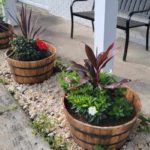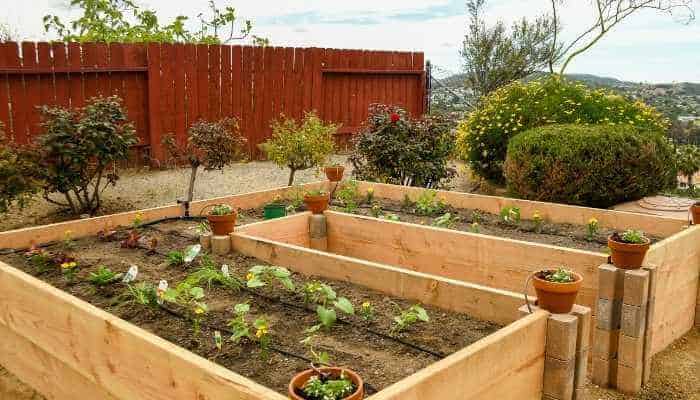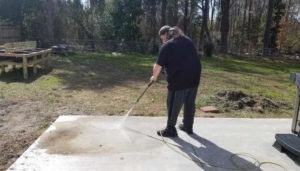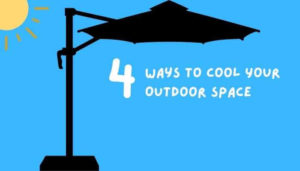There are a lot of factors that go into answering this particular question. It’s not as simple as you may think. There are types of tomatoes, the space your bed provides, and things that can be used to help make raised beds better for growing tomatoes in a tight space. I can answer you using the most common standards found in the world of backyard gardening, but then I can explain.
Most people have planters that are 3 – 4 feet wide and 4, 6, or 8 feet long by comparison. So, if you have a 4×4 foot (1.2 meters) space you should only have 9 standard bush tomato plants equal distance apart in it. You can have up to 5 all-season vining tomato plants if they are caged and pruned.
I know, I’m the type of person who wants to know the “why” behind every answer. Therefore, I have no problem explaining. I’ll also explore some other common scenarios you may find yourself in as well as use my own experience to help out. Just keep reading!
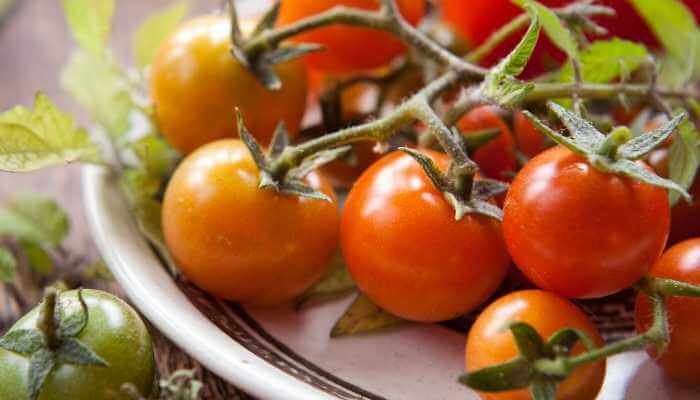
Why Do Tomatoes Need So Much Space?
What happens if you plant tomatoes too close together? Well, they have heavy fruit and foliage, so if the plants are crowded together, the air can’t circulate well. That means you leave them open to humidity that can lead to blight and mold that then can spread very easily thanks to the tomato plants being so crowded.
I also noted that the more crowded and less dirt my tomatoes had, the less fruit they would make. This is because, if the tomato plant is shaded (crowding can shade parts of the plants) the blossoms will simply drop off and never produce fruit.
Most indeterminate (vining) tomato plants need to be 18 to 24 inches (45 to 70 cm) apart. Most determinate (bush) tomato plants need at least a foot (30 cm) apart. If you are using some sort of support around them so that they continue in upward growth, the support size may establish how much space you need. So, what do I mean by indeterminate and determinate?
Determinate vs Indeterminate Tomatoes; Which to Use?

Determinate Tomatoes grow for a definite period and are not very large (4-5 feet/1.2 – 1.5 meters). Their fruits ripen within a few weeks, and once you harvest them, the plant stops growing. They are often referred to as bush tomatoes. Because they stop growing after the one harvest, you don’t have to worry about pruning them or giving them a lot of space.
Most resources I’ve seen show these plants anywhere from 1 foot apart to maybe 1 ½ foot apart. So in a standard 4×4 bed:

This year I’ve not planted many, because it’s the first year in our new home. Normally I would plant two or three varieties of these bush tomatoes, and I’d go with the meatier varieties because I like canning them or in the case of Romas, I love to use them on pizzas and other recipes. I also recommend that if you’re going to let these tomatoes run their course, use a cage to help their limbs be supported.
I’ve actually had Roma tomatoes continue producing fruit until frost. I had 3 plants in a 2×4 foot raised bed and everything worked out very well. They just didn’t grow as many after that first abundant crop.
Indeterminate Tomatoes do not stop growing until they feel the frost. They keep growing, vining from the original stem, and producing fruits all season. That’s why they are usually called vining tomatoes. These plants can grow to 10 feet (3 meters) if they’re not pruned. Therefore, they are going to need more space to grow, but they give you a larger amount of fruit to enjoy.

You really must use trellises and cages for vining tomatoes, because they have a lot of vines to support, and having the support of these things makes it easier to get to the fruit and not lose them to rot on the ground. And honestly, it’s the support method that you use that can determine what kind of space you need.
Most resources I’ve seen show these plants should be 2 feet apart. So in a standard 4×4 bed:

Some people opt for using 5-gallon buckets for their tomato plants, just remember you’ll still need some kind of support in order to make this work. I’m going to go on the record and say that my tomatoes did much better when planted in a larger container, back when I had my containers on the back porch of my apartment. I believe they were 18-gallon Rubbermaid containers leftover from a move. The smaller the container, the fewer fruits I had.
Tips For Growing Tomatoes In A 4×4 Raised Bed
Choose the right fertilizer for the best start for your newly transplanted tomato plants. There are fertilizers made specifically for tomatoes. However, the rule of thumb is o go with the type that has the middle number (phosphorous) greater than the first number (nitrogen). Phosphorous promotes fruit while nitrogen promotes the growth of leaves.
Slow-release fertilizers work better for tomatoes than fast-release, water-soluble fertilizers. Also, most tomato fertilizers have extra calcium to prevent end-rot which is a common issue for tomato plants.
Watering from the base and keeping the roots in moist soil help tremendously cut down on misshapen fruits or cracked fruits. Tomato plants like consistency and so, if it dries out (which raised beds can do easily) then you introduce a lot of water the plants kind of go into shock and don’t know what to do. And if there are fruits forming, this can lead to cracking of the skin. If you have time and money for it, a trickle watering system should help with this.
Also, remember that you should always top the soil off with some sort of cover to help prevent the moisture from drying up. Organic or natural mulch is perfect for this, though I do know some people that use straw or dead leaves.
When people talk about “tickling their tomatoes” what they mean is that they use their fingers to help with pollination. Do you know how the bees and butterflies hop around from flower to flower and plant to plant carrying the pollen on their footsies as they drink nectar? That’s taking the old-fashioned method and can still happen. But if you tickle those tomato blooms, you are ensuring that it happens.
Pruning is something to handle, especially when it comes to vining tomatoes. If you watch, there is one main stem with many smaller offshoot stems. You really only need maybe five or so main stems. Why? Well, the more stems, the more work the plant has to do and the resources will be spread out instead of pushing to make the best fruit possible. Always prune.
What are the Benefits of Growing Tomatoes in Raised Beds?
There is nothing so rewarding as having your own vegetables from your own raised bed gardens. No tilling, very little weeding, and you have a lot of control over every aspect of it. So growing tomatoes in these beds just make perfect sense.
Like any plant, tomatoes benefit from not having any competition in the raised beds or in the planter you choose. And in a raised bed, there is adequate draining with minimum weed competition. You control how many and what space to plant. I would also suggest that if you have a lot of plants in your beds, put the tumbling tomatoes (the ones with the multiple small fruits on one stem) near the edge of your beds so the fruit is easy to get to.
Because the soil in a raised bed gets hotter faster, tomato plants love it! They love heat and thrive in it. After all, tomatoes are actually a subtropic-tropic plant that has just been migrated all over the world. That’s why you should wait til you no longer have cold weather to plant them.
I hope you take a chance on tomatoes in a raised garden and use our suggestions to make the most of your crop!

